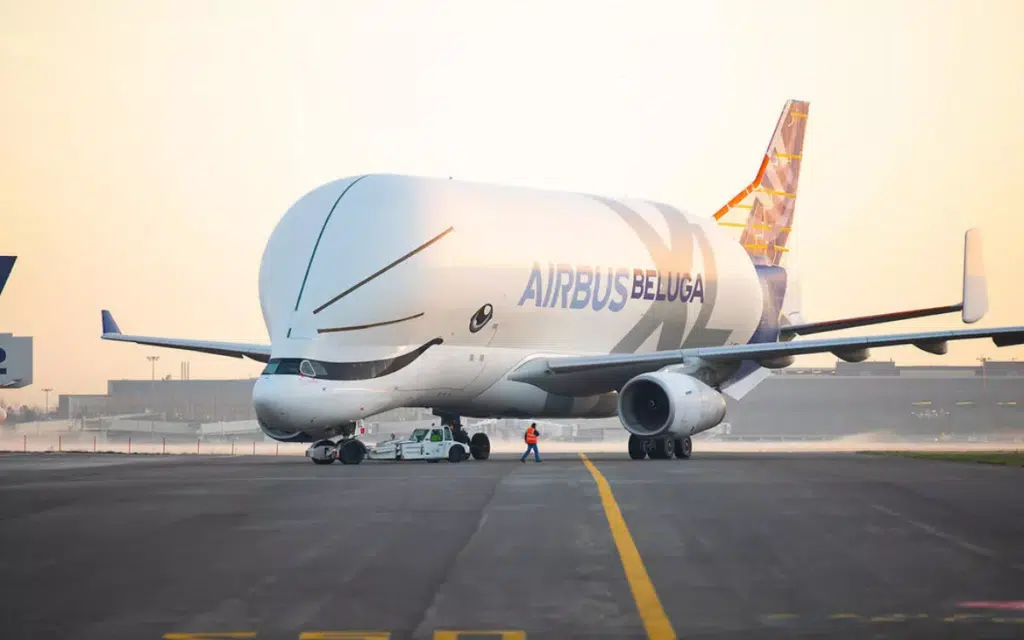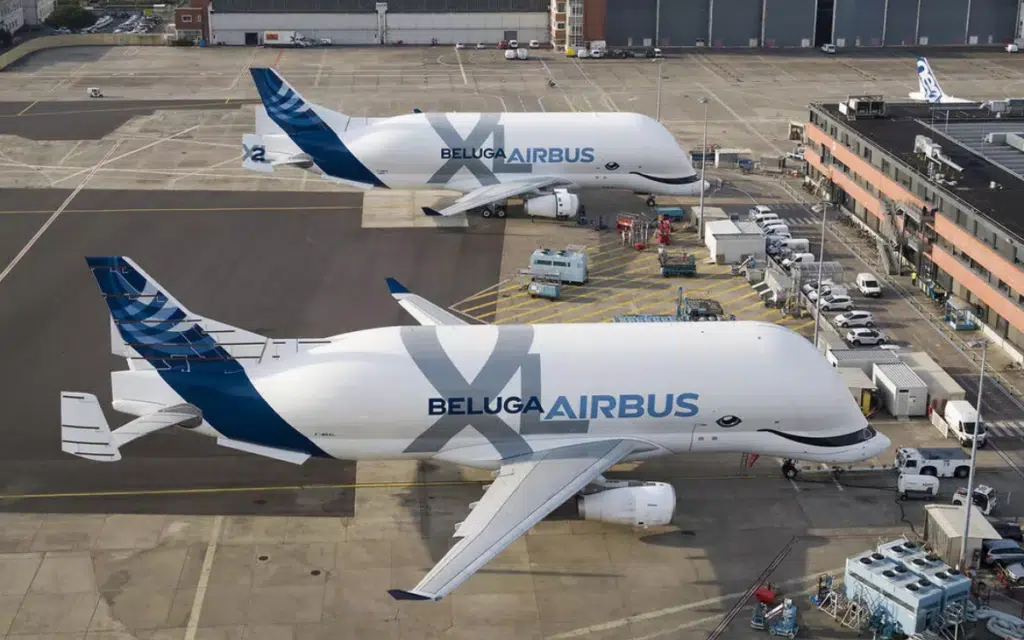The strangest-looking plane on the planet now has its own airline
- This gigantic and oddly aircraft is getting its own airline
- But not just anyone will be allowed to fly on this plane shaped like a beluga whale
- Airbus Beluga Transport will serve a very specific niche of transport needs
Published on Jun 03, 2024 at 4:48 PM (UTC+4)
by Andie Reeves
Last updated on Jun 03, 2024 at 4:48 PM (UTC+4)
Edited by
Tom Wood
The Airbus Beluga is the weirdest-looking plane in the sky.
The cartoon-ish aircraft now has its own airline.
But not just anyone will be allowed to fly on this plane shaped like a gigantic beluga whale.
This airline is for transporting very specific types of cargo only.
READ MORE: New business class seat redefines what it’s like to fly in luxury
The Airbus Beluga was designed to tackle the difficult task of transporting extra large cargo, such as sections of aircraft to manufacturing facilities.
Its design was influenced by another sea creature-inspired aircraft: NASA’s Super Guppy.
Now, Airbus’ original Beluga ST fleet is being replaced by the newer and more spacious Beluga XL.

This aircraft will have enough space to carry both wings of the Airbus A350, the company’s latest aircraft, while the Beluga ST could only transport one at a time.
The interior has to be seen to be believed, with a 25-foot door that swings open to reveal tracks running along a cavernous tunnel.
And it’s surprisingly nimble on the landing strip, considering its size.
The older ST models will now be used for the airline called Airbus Beluga Transport.
They’ve been in service for nearly 20 years, and the company reckons they’ve got another 20 in them still.
This airline is for transporting oversized cargo such as helicopters, satellites, aircraft engines, boats, or military vehicles.
You know, those items that are just slightly too big to be checked in.
Its cargo hold is 50% bigger and 10% wider than a regular cargo aircraft.

But flying such an unusual plane comes with its challenges.
While the cockpit is unchanged from the Airbus A300 it’s based on, pilots have to undergo special training to get used to flying with such a big head.
Another challenge is its range, which is 1,600 nautical miles.
This means it would need to stop to refuel up to two times when traveling between Europe and the United States.
Its maximum cargo weight is 40 metric tons, which is significantly less than a competitor like the Antonov, which can transport three times this weight.
But while other cargo planes can carry heavier loads, this airline has a unique edge in that it’s well-versed in the complexities that come with transporting items like helicopters or satellites.
DISCOVER SBX CARS: The global premium car auction platform powered by Supercar Blondie

Andie is a content writer from South Africa with a background in broadcasting and journalism. Starting her career in the glossy pages of Cosmopolitan and Marie Claire, Andie has a broad portfolio, covering everything from sustainability solutions to celebrity car collections. When not at her laptop Andie can be found sewing, recording her podcast, taking board games too seriously or road-tripping in her bright green Kia.




